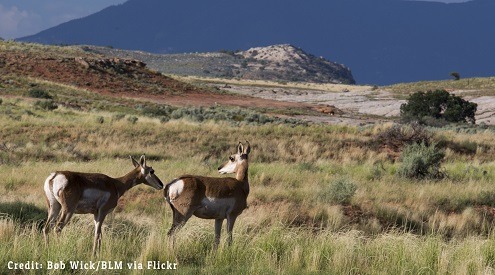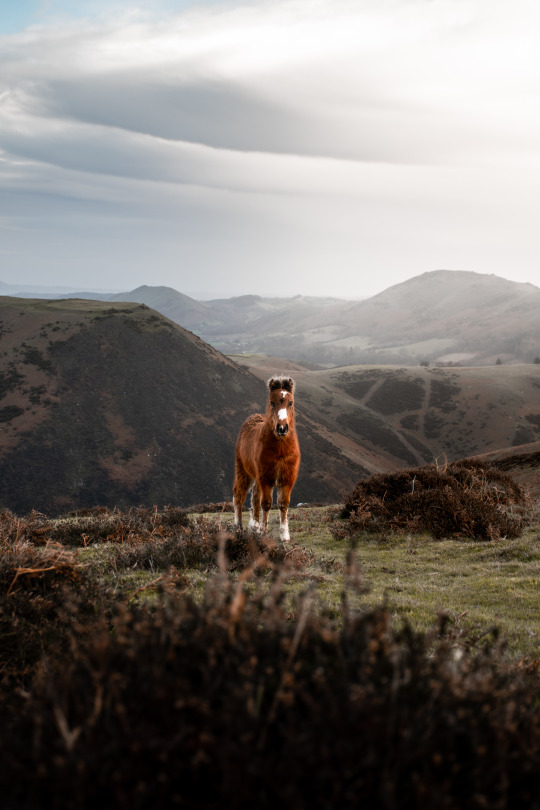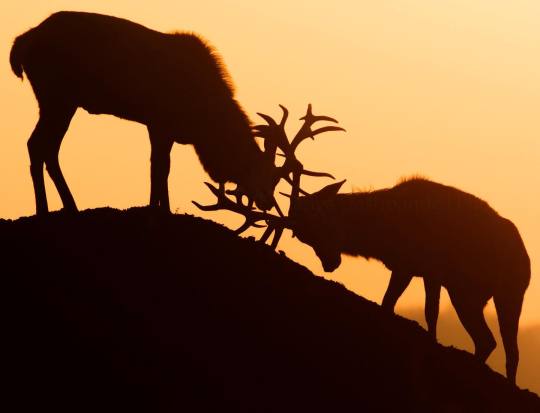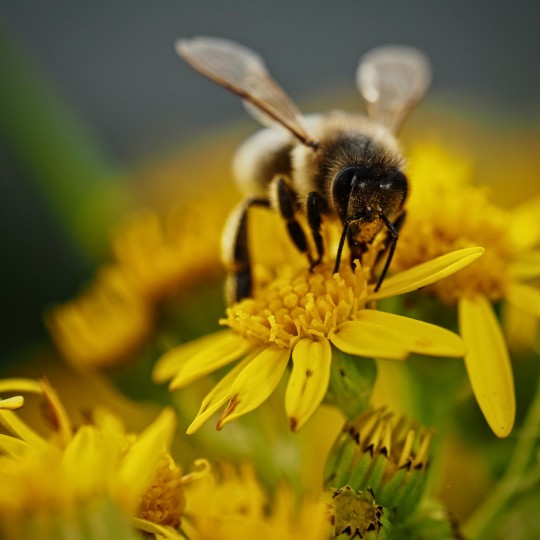#uk-wildlife
Video
Thrip by Alf Branch
Via Flickr:
Testing out my new diffuser today and so far very happy. Not seen these before I think they are Thrips but not too sure
#Macro#MacroDreams#Macro-safari#west Cumbria#Wildlife#wild#wildlife-safari#uk-wildlife#British-wildlife#British-wildlife-safari#invertibrate#close up#Alf-Branch#NGC#flickr
0 notes
Text

A drinker moth - Euthrix potatoria. Excellent gorse-gripping technique.

2K notes
·
View notes
Photo


chaitdeshphotography
#animal crossing#deer#forest#wildlife#ethical wildlife photography#UK#misty morning#curators on tumblr
8K notes
·
View notes
Text
"Abby Allen has no problem with her neighbours peering over her luxuriant hedges to see what she is up to on her farm.
For years she has been carrying out ad hoc experiments with wildlife and farming techniques; in her lush Devon fields native cattle graze alongside 400-year-old hedgerows, with birds and butterflies enjoying the species-rich pasture.
Under the environmental land management scheme (ELMS), introduced by the government in 2021, those experiments were finally being funded. “We have a neighbour who has always been more of an intensive farmer,” she says, but he is now considering leaving fields unploughed to help the soil. “It genuinely is having such a huge impact in changing people’s mindsets who traditionally would never have thought about farming in this way.”
The new nature payments scheme followed the UK’s exit from the EU, when the government decided to scrap the common agricultural payments scheme, which gave a flat subsidy dependent on the number of acres a farmer managed. In its place came ELMS, which pays farmers for things such as planting hedges, sowing wildflowers for birds to feed on and leaving corners of their land wild for nature.
But these schemes are now at threat of defunding, as the Labour government has refused to commit to the £2.4bn a year spending pot put in place by the previous Conservative government. With spending tight and the chancellor, Rachel Reeves, cutting back on infrastructure and hinting at tax rises, a cut to the ELMS scheme may be on her list.
However, government data released last week found the schemes were working to tentatively bring nature back to England’s farmland. Butterflies, bees and bats are among the wildlife being boosted by ELMS, with birds among the chief beneficiaries, particularly ones that largely feed on invertebrates. An average of 25% more breeding birds were found in areas utilising the eco-friendly schemes.
...there are also farmers who welcome the schemes. Allen says the ELMS has helped her farm provide data and funds to expand and improve the good things they were doing for nature. “Some of the money available around things like soil testing and monitoring – instead of us going ‘we think these are the right things to do and providing these benefits,’ we can now measure it. The exciting thing now is there is money available to measure and monitor and kind of prove that you’re doing the right things. And so then you can find appropriate funding to do more of that.”
Allen, who is in the Nature Friendly Farming Network, manages a network of farms in England, most of which are using the ELMS. This includes chicken farms where the poultry spend their life outside rather than in sheds and other regenerative livestock businesses...
Mark Spencer was an environment minister until 2024 when he lost his seat, but now spends more time in the fields admiring the fruits of his and his family’s labour. He says that a few years of nature-friendly agriculture has restored lapwings and owls.
“On the farm, I haven’t seen lapwings in any number for what feels like a whole generation. You know, as a kid, when I was in my early teens, you’d see lapwings. We used to call them peewits. We’d see them all the time, and they sort of disappeared.
“But then, me and my neighbours changed the way we did cropping, left space in the fields for them to nest, and suddenly they returned. You need to have a piece of land where you’re not having mechanical machinery go over it on a regular basis, because otherwise you destroy the nest. We’ve also got baby owls in our owl box now for the first time in 15 years. They look mega, to be honest, these little owls, little balls of fluff. It is rewarding.”"
-via The Guardian, August 23, 2024
#rewilding#nature#sustainability#endangered species#birds#wildlife#england#uk#uk politics#farming#sustainable agriculture#good news#hope
498 notes
·
View notes
Text

A black guillemot or tystie (Cepphus grylle) in Mousa, Shetland, UK
by Gary Faulkner
#black guillemot#guillemots#auks#seabirds#birds#cepphus grylle#cepphus#Alcidae#Charadriiformes#aves#chordata#wildlife: uk#wildlife: europe
519 notes
·
View notes
Text
Good News - June 8-14
Like these weekly compilations? Tip me at $Kaybarr1735! And if you tip me and give me a way to contact you, at the end of the month I'll send you a link to all of the articles I found but didn't use each week!
1. Rare foal born on estate for first time in 100 years

“The Food Museum at Abbot's Hall in Stowmarket, Suffolk, is home to a small number of Suffolk Punch horses - a breed considered critically endangered by the Rare Breeds Survival Trust. A female foal was born on Saturday and has been named Abbots Juno to honour the last horse born at the museum in 1924. [...] Juno is just one of 12 fillies born so far this year in the country and she could potentially help produce more of the breed in the future.”
2. The cement that could turn your house into a giant battery

“[Scientists] at Massachusetts Institute of Technology (MIT) have found a way of creating an energy storage device known as a supercapacitor from three basic, cheap materials – water, cement and a soot-like substance called carbon black. [... Supercapacitators] can charge much more quickly than a lithium ion battery and don't suffer from the same levels of degradation in performance. [... Future applications of this concrete might include] roads that store solar energy and then release it to recharge electric cars wirelessly as they drive along a road [... and] energy-storing foundations of houses.”
3. New road lights, fewer dead insects—insect-friendly lighting successfully tested

“Tailored and shielded road lights make the light source almost invisible outside the illuminated area and significantly reduces the lethal attraction for flying insects in different environments. [...] The new LED luminaires deliver more focused light, reduce spill light, and are shielded above and to the side to minimize light pollution. [... In contrast,] dimming the conventional lights by a factor of 5 had no significant effect on insect attraction.”
4. When LGBTQ health is at stake, patient navigators are ready to help

“[S]ome health care systems have begun to offer guides, or navigators, to get people the help they need. [... W]hether they're just looking for a new doctor or taking the first step toward getting gender-affirming care, "a lot of our patients really benefit from having someone like me who is there to make sure that they are getting connected with a person who is immediately going to provide a safe environment for them." [... A navigator] also connects people with LGBTQ community organizations, social groups and peer support groups.”
5. Tech company to help tackle invasive plant species

“Himalayan balsam has very sugary nectar which tempts bees and other pollinators away from native plants, thereby preventing them from producing seed. It outcompetes native plant species for resources such as sunlight, space and nutrients. [...] The volunteer scheme is open to all GWT WilderGlos users who have a smartphone and can download the Crowdorsa app, where they can then earn up to 25p per square meter of Balsam removed.”
6. [Fish & Wildlife] Service Provides Over $14 Million to Benefit Local Communities, Clean Waterways and Recreational Boaters

“The U.S. Fish and Wildlife Service is distributing more than $14 million in Clean Vessel Act grants to improve water quality and increase opportunities for fishing, shellfish harvests and safe swimming in the nation’s waterways. By helping recreational boaters properly dispose of sewage, this year’s grants will improve conditions for local communities, wildlife and recreational boaters in 18 states and Guam.”
7. Bornean clouded leopard family filmed in wild for first time ever

“Camera traps in Tanjung Puting National Park in Indonesian Borneo have captured a Bornean clouded leopard mother and her two cubs wandering through a forest. It's the first time a family of these endangered leopards has been caught on camera in the wild, according [to] staff from the Orangutan Foundation who placed camera traps throughout the forest to learn more about the elusive species.”
8. Toy library helps parents save money 'and the planet'

“Started in 2015 by Annie Berry, South Bristol's toy library aims to reduce waste and allow more children access to more - and sometimes expensive - toys. [...] Ms Berry partnered with the St Philips recycling centre on a pilot project to rescue items back from landfill, bringing more toys into the library. [...] [P]eople use it to support the environment, take out toys that they might not have the space for at home or be able to afford, and allow children to pick non-gender specific toys.”
9. Chicago Receives $3M Grant to Inventory Its Trees and Create Plan to Manage City’s Urban Forest

“The Chicago Park District received a $1.48 million grant [“made available through the federal Inflation Reduction Act”] to complete a 100% inventory of its estimated 250,000 trees, develop an urban forestry management plan and plant 200 trees in disadvantaged areas with the highest need. As with the city, development of the management plan is expected to involve significant community input.”
10. Strong Public Support for Indigenous Co-Stewardship Plan for Bears Ears National Monument

“[The NFW has a] plan to collaboratively steward Bears Ears National Monument to safeguard wildlife, protect cultural resources, and better manage outdoor recreation. The plan was the result of a two-year collaboration among the five Tribes of the Bears Ears Inter-Tribal Coalition and upholds Tribal sovereignty, incorporates Traditional Ecological Knowledge, and responsibly manages the monument for hunting, fishing, and other outdoor recreation while ensuring the continued health of the ecosystem.”
June 1-7 news here | (all credit for images and written material can be found at the source linked; I don’t claim credit for anything but curating.)
#hopepunk#good news#nature#horse#rare breed#energy storage#clean energy#biodiversity#street lights#lgbtq#health#native plants#invasive species#incentive#fws#water#fishing#swimming#clouded leopard#indonesia#library#kids toys#interdependence#bristol#uk#funding#native#outdoor recreation#animals#wildlife
735 notes
·
View notes
Text

The sweetest young wild pony high up on the Long Mynd just before all the rain and sleet came howling through.
Shropshire, UK
#alexmurison#nature#wildlife#pony#wild pony#shropshire#uk#travel#wandering#wander#wanderlust#explore#walking#explore more#wilderness#walk#hiking#adventure#lensblr#hills#cute#beautiful#landscape#photography#photographers on tumblr#original photography blog#nature photography#landscapes#mountains
686 notes
·
View notes
Photo

Photograph: Kay Roxby
#frog#uk#wildlife#animals#nature#photography#cute#fauna#cute animals#wildlifephotography#peace#peace photography
968 notes
·
View notes
Text

Pigeons!
#pigeon#pigeons#birds#uk wildlife#wildlife photography#wild bird#photography#mobilephotography#amature photographer#photographerlife#nature#nature photopragpy#naturephotography#beautiful nature#naturelovers#photographers on tumblr#original photography on tumblr#original photography#original photographers#women photographers#female photographers
86 notes
·
View notes
Text



Great crested grebes doing their courtship ritual "weed" dance
#great crested grebe#grebes#birds#bird photography#courtship#dance#ritual#natural world#wildlife#outdoor#outdoor photography#photography is my therapy#rspb#rspb love nature#uk nature#uk birds#photographers on tumblr#original work#original content#original photographers#nature#all my own work
85 notes
·
View notes
Video
Wodlouse 1 by Alf Branch
Via Flickr:
A shot of a woodlouse that I found in my woodpile. This is from testing my Cygnustech Diffuser which is great for larger subjects but when I get to 2:1 or higher mag not so much as I reckon the light is too diffuse. It worked well here.
#wood-louse#wood-lice#invertibrate#Macro#MacroDreams#Macro-safari#Wildlife#wildlife-safari#uk-wildlife#UK-wildlife-safari#British-wildlife#British-wildlife-safari#close up#Olympus#OMD#Olympus-OMD-E-M1-Mkii#Nissin-i40#Cygnustech-diffuser#Laowa#laowa-50mm-f2.8#flickr
0 notes
Text


A light emerald moth - Campaea margaritata. In the woods, awaiting the arrival of dusk.
523 notes
·
View notes
Photo




chaitdeshphotography
3K notes
·
View notes
Text

this has been my holdback photo for a couple of weeks. the lighting was perfect, this was a photo i was so happy to capture!
#photography#nature#photographers on tumblr#uk wildlife#animals#flowercore#flower core#wild flowers#honey bee#save the bees#bee#bees#cute insect#cute bee#yellow#naturecore#nature colors#i took this#no ai used#no ai art#i just love them so much#bugs
94 notes
·
View notes
Text

A snow bunting (Plectrophenax nivalis) in the United Kingdom
by Graham Thurlow
#snow bunting#birds#plectrophenax nivalis#plectrophenax#calcariidae#passeriformes#aves#chordata#wildlife: uk#wildlife: europe
1K notes
·
View notes
Text

photo by me, taken somewhere in the middle of Scotland.
#fellow travelers#travel#aesthetic#Scotland#wales#uk#my photo#photography#nature#landscape#wildlife#photooftheday#beautiful photos#blue sky#sunset#photographers on tumblr#lana del rey#ldr#lana del ray aesthetic#lana stan#ultraviolence#vintage#born to die#lana#lana del rey fans#art#Lightroom
62 notes
·
View notes
